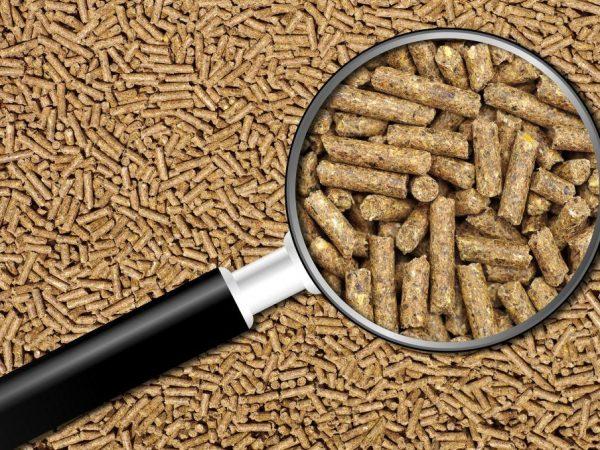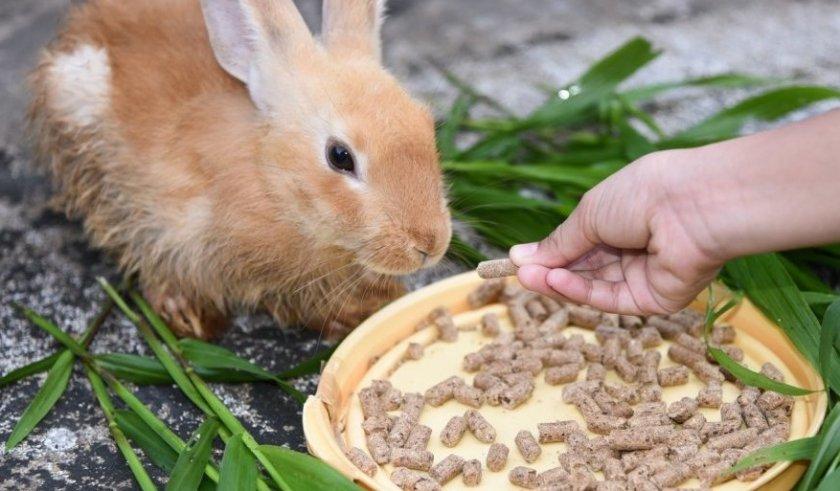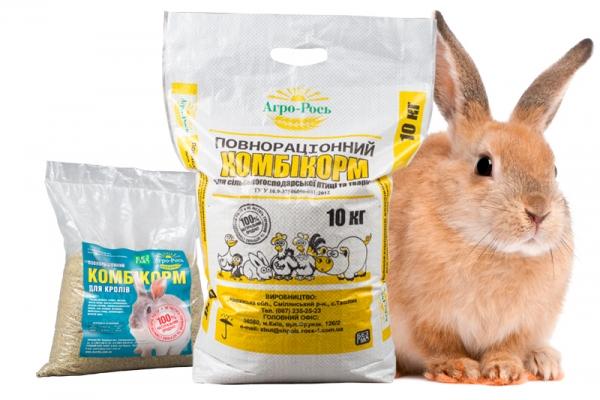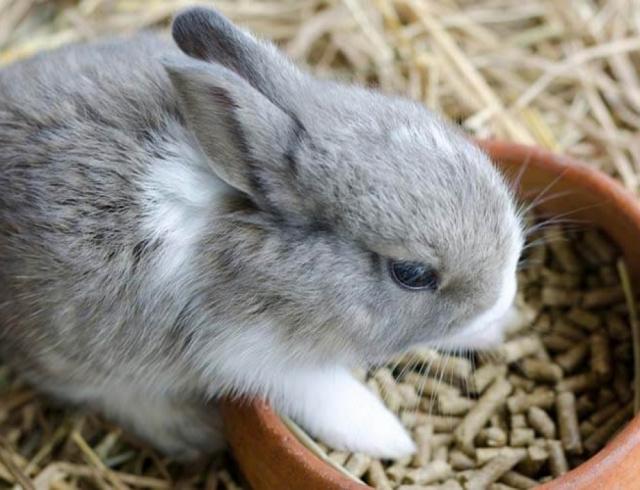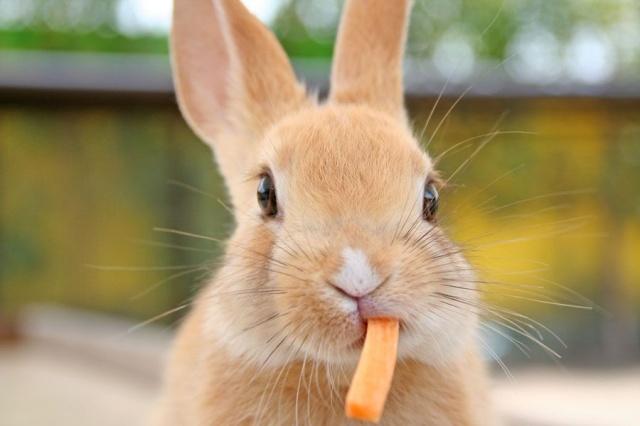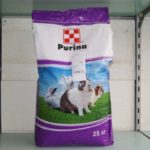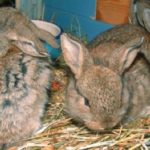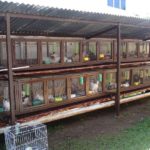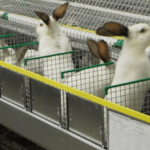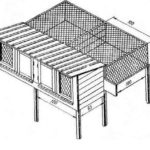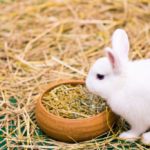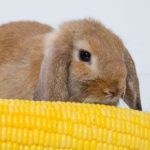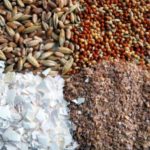Farmers who breed rabbits often face the problem of finding feed suitable for their animals. A mixture of plant materials, supplemented with minerals and vitamins, avoids numerous problems that arise when raising rabbits. A certain type of food is most often intended for a specific age group of animals, and can also be selected taking into account specific needs.
Advantages and disadvantages
Feeding with compound feed has its pros and cons.
| Advantages | Flaws |
| Ease of use: granules are sold in large bags. Each product comes with an additional measuring container. | Switching to another type of food provokes indigestion; sometimes the composition of the food may not suit the animal the first time. |
| Composition enriched with vitamins, minerals, and medicines | Requires a lot of drinking |
| Can be used all year round, excluding summer | Medicines, if present, can affect the taste of meat |
| Does not require reserves, as is the case with hay, which must be prepared in advance | Financial costs for purchasing feed |
| Control over the volume of each portion | Constant control over the composition of the feed, since animals can move from one category to another |
Types of feed
There are several types of food for rabbits. Sometimes it is necessary to change several types of food before finding the right mixture.
By release form
Pelleted feed is produced on special factory lines. Granules belong to the group of extruded feed.
It differs from loose feed in its compactness and high safety indicator. Pathogens rarely settle on the surface of granules.
Most of the composition of the granules is occupied by herbs, which is why the food is called grass-fed. Its advantage is its ease of use. Compound feed in granules tolerates long-term transportation and is stored well and for a long time.
By purpose
Based on the type of purpose, feed is divided into 2 groups:
- Full-fledged. These are mixtures that completely provide the diet. Using this type does not require purchasing supplements.
- Concentrated. Used as a supplement to hay and other types of feed.They are a mixture with a predominance of one of the elements: most often these are vitamins or minerals.
Reference! When feeding rabbits with complete formulas, it is necessary to provide the animals with plenty of drink.
Composition of feed for rabbits
For each individual group of rabbits, the composition of the nutritional mixture has been developed, taking into account age and physical characteristics. The composition of the mixture takes into account the daily consumption rate for all categories of animal groups.
For adults
Adults need a nutritious diet based on 40% grass and 1.3% vitamins and minerals. 25% of this composition comes from barley.
For pregnant females
Pregnant females need more than 2% vitamins and minerals. Salt is almost completely excluded from the composition. In addition, the soy content is increased. The grass content is at the traditional level for an adult: 40%.
For fattening rabbits
Grasses, oats and barley are distributed as follows: 30%:20%:20%. Increased vitamin content. The figure reaches 1.5%.
For decorative rabbits
The composition of food for decorative rabbits is completely the same as for fattening species. This is due to the fact that the formula is completely balanced, the action is aimed at creating a nutritious diet for healthy individuals.
The best manufacturers
Among the best brands producing feed for rabbits, the leaders are companies that have many years of experience and production traditions. These are the following companies:
- "Purina." A European brand that produces food for farm and pet animals.
- "Ushastik." Russian manufacturer, specializes in the production of feed for adult rabbits.
- “Provimi.”Russian manufacturer specializing in the production of complete feed for farm animals. It also produces additives: premixes and concentrates.
How to make compound feed with your own hands
You can independently prepare compound feed according to a special recipe using special equipment:
- Scales. For weighing ingredients. The error of the scales should be small, since mixtures are not recommended to be prepared in large volumes.
- Granulator. This is a meat grinder that thoroughly grinds the components. Without a granulator, you can prepare mash, which in the future will have to be further crushed.
- Industrial crusher. Used for crushing grains and cereals. The crusher can be replaced with a drill.
- Mixer. Necessary to create homogeneity of the mixture.
- Dryer. Used to remove excess moisture from feed. Hot mixtures placed in the dryer do not have time to steam. Prolonged evaporation of components can lead to loss of beneficial properties of some elements.
All components are mixed after weighing, then crushed, dried and stored. Exemplary composition of a universal mixture for animal feed:
- component to choose from: wheat, corn, barley – from 10 to 20%;
- herbal ingredient – up to 40%;
- sunflower cake – 10%;
- soy additive – 5%;
- fishmeal – 2%;
- salt – 0.3%;
- yeast extract – 2%.
Attention! Self-prepared food is made taking into account the fact that it will last the rabbits for 1 month, but no more. This is due to the fact that long-term storage can lead to spoilage of feed.
Consumption rates and how to give it to rabbits
Consumption standards are set taking into account which feeding option is used.Complete food fully satisfies the needs of the animal, and premixes are only an additive to the main food. At home, it is recommended to control volumes using scales without errors.
| Category | Daily norm of complete feed |
| Pregnant females | up to 180 grams |
| Nursing rabbits with rabbits | from 170 to 700 grams |
| Juveniles up to 60 days old | 140-150 grams |
| Juveniles from 61 days to 90 days | 205 grams |
| Individuals from 90 to 120 days | 280 grams |
| Young animals after 120 days | 200 grams |
Feeding female rabbits with newly hatched rabbits deserves special attention. The daily rate is set taking into account the age of the rabbits. The offspring remains with the rabbit until they reach 45 days of age, then each individual begins to separately receive its own portion, which is 140 grams.
The feeding process differs depending on the time of year. In the summer, in addition to the complete diet, the rabbits are allowed to graze so that they receive natural ingredients, obtaining some food on their own.
Beginning rabbit breeders are wondering whether it is possible to feed rabbits with food intended for other farm animals. This is strictly prohibited. Chicken feed contains fine shell sand, which causes digestive problems in rabbits. Cow feed contains a high amount of salt, which is not suitable for feeding rabbits.


